Manga Month: The Manga Makers Interviews
Apr 01, 2016
The old saying "It takes a village" is extremely appropriate when you start talking about bringing manga from Japan to Western audiences. There are an awful lot of talented people involved — people who share a passion for the creativity and stories that only manga can bring to its readers.
To Celebrate Manga Month in the April PREVIEWS, here’s a few people behind the scenes who make manga happen for all of us.
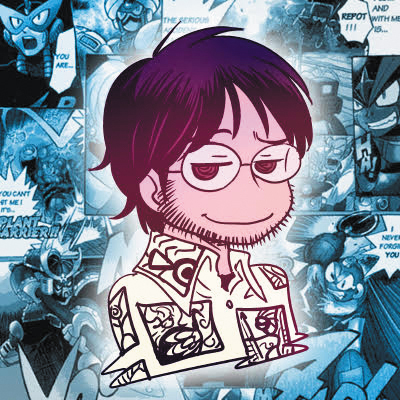 |
Hitoshi Ariga
PREVIEWSworld: Tell us a little bit about yourself. What’s it like being Hitoshi Ariga?
Hitoshi Ariga: I am originally a game developer and was creating games for consoles such as Mega Drive (Sega Genesis) and Super Famicom (aka: Super Nintendo). Later on, I also began working on creating Manga.
PREVIEWSworld: What are your favorite manga you’ve worked on in your career?
Hitoshi Ariga: I choose Mega Man Megamix as my favorite piece of my own work. I wrote the manga when I was young, so there are parts that are immature. Yet I treasure it because it contains much passion and reminds me of my strong motivation.
PREVIEWSworld: What manga are you currently working on?
Hitoshi Ariga: While staying involved in game creation, right now I draw designs for a children’s book that feature the Japanese Edo period and demons. I also handle various character designs and illustrating.
PREVEIWSworld: What Manga artists/creators have influenced you?
Hitoshi Ariga: Osamu Tezuka.
PREVIEWSworld: What anime do you think should be made into a manga or vice-versa?
Hitoshi Ariga: I would be happy if Mega Man Megamix became an anime. Or also the children’s book Yokai Torimonocho that I am currently working on. Otherwise, it would be interesting to read a manga version of the anime Karas by Keiichi Sato.
PREVIEWSworld: What manga titles would you recommend to readers?
Hitoshi Ariga: It is a Japanese manga, but at present I recommend Uchu no Gazou by Naoki Yokouchi. The manga is set in a cruel world, yet it has a pop design touch with warmhearted characters. It is an amazing manga and I am hoping for a sequel.
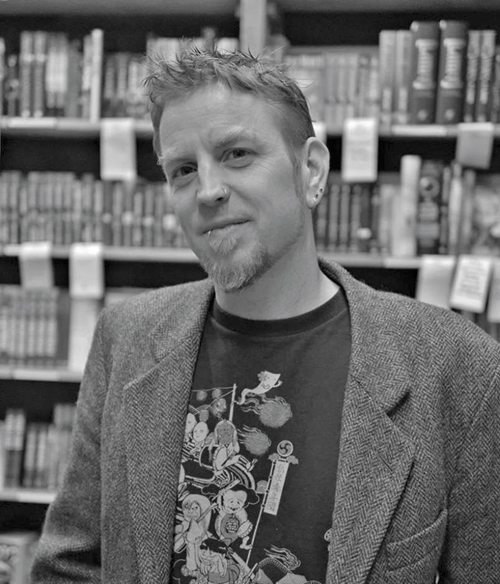 |
Zack Davisson
PREVIEWSworld: Tell us a little bit about yourself. What’s it like being Zack Davisson?
Zack Davisson I’m a translator and writer, with a special interest in classic manga and Japanese folklore. I translate manga legends like Shigeru Mizuki, Satoshi Kon, and Leiji Matsumoto, and I am also the author of Yurei: The Japanese Ghost and an essayist for Wayward from Image comics. I have contributed to exhibitions at the Wereldmuseum Rotterdam and the Henry Art Museum, lectured at Denison University and Everett College, and I was nominated for the 2014 Japanese-US Friendship Commission Translation Prize for my translation of the Eisner Award winning Showa: A History of Japan. I live in Seattle, Washington with my wife Miyuki, dog Mochi, cats Bagheera and Shere Khan, and several ghosts.
PREVIEWSworld: What are your favorite manga you’ve worked on in your career?
Zack Davisson Definitely Kitaro from Drawn & Quarterly. That’s the comic I got into manga translation to work on — that was my dream project long before I ever got my first job! I don’t know that it will ever get much better!
PREVIEWSworld: What manga are you currently working on?
Zack Davisson I’m doing the 7-volume Kitaro series for Drawn & Quarterly, and I'm starting on the second volume of Queen Emeraldas for Kodansha. Both are dream projects!
PREVIEWSworld: What Manga artists/creators have influenced you?
Zack Davisson: Leiji Matsumoto was my first introduction to manga, with his anime like Space Battleship Yamato and Queen Emeraldas. Shigeru Mizuki I discovered much later, but have been obsessed with ever since. I feel he is a true genius of the comic art form. I also love Rumiko Takahashi, Jiro Taniguchi, Miyuki Saga, Satoshi Kon, Ryoichi Ikegami, Inio Asano, and many more.
PREVIEWSworld: What is your favorite manga?
Zack Davisson: Kitaro of course! But I may be a bit biased there. If I had to go with one I didn’t work on, then Inio Asano’s Solanin tops my list. And Rumiko Takahashi’s Maison Ikkoku will always hold a special place in my heart. Love that comic.
PREVIEWSworld: What anime do you think should be made into a manga or vice-versa?
Zack Davisson: That’s tough for me, because I don’t watch much anime. I don’t honestly know what is available. It would be interesting to see something like Shigeru Mizuki’s Showa: A History of Japan animated, although I don’t know how they would do it. I tend to like the more human anime, like Isao Takahata’s work.
PREVIEWSworld: What manga titles would you recommend to readers?
Zack Davisson: Of course, all of Shigeru Mizuki’s comics! He is a phenomenal artist—one of the best to ever put ink to paper. For comics I didn’t work on, Asano’s Solanin is a constant recommendation, as is Jiro Taniguchi’s The Quest for the Missing Girl. I also recently fell in love with Makoto Yukimura’s Planetes. All of those should be on anyone’s shelves. And Dr. Slump, because that is just brilliant. Oh! And Vinland Saga! And … too many to mention!!! I really love manga.
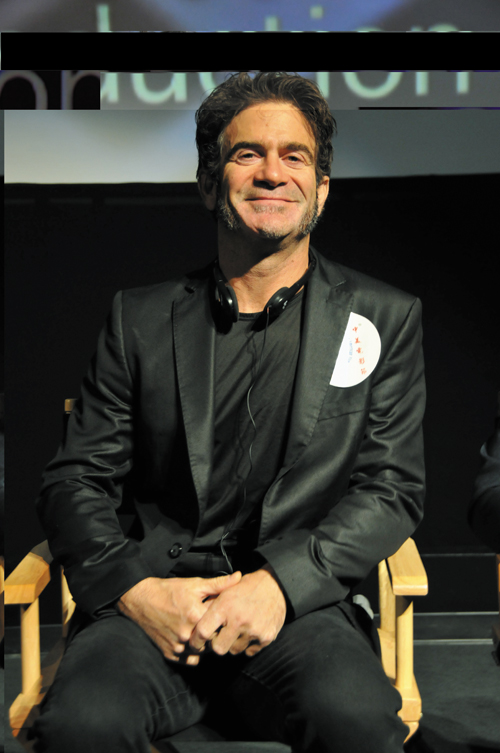 |
Stu Levy
PREVIEWSworld: Tell us a little bit about yourself. What’s it like being Stu Levy?
Stu Levy: Instead of giving my official bio (which you can read on my website www.StuLevy.com), I’ve basically done a bit of everything in my career. Focusing on manga, I’ve edited, published, translated, curated, lettered, retouched, written, and even drawn storyboards (thumbnails) – but I’ve never drawn pencils, inks, tones or colors because I’m a terrible artist. Although one time, I helped paint an amazing mural that Santa Inoue (creator of Tokyo Tribes) drew for the show Extreme Makeover Home Edition! So far, I’ve overseen publication of more than {gulp} 4,000 manga.
PREVIEWSworld: What are your favorite manga you’ve worked on in your career?
Stu Levy: That’s a very difficult question for me since I’ve been fortunate to publish so many amazing manga. I suppose it’s a toss-up between my first major title Sailor Moon and my main original title Princess Ai. I learned a tremendous amount from both of those experiences. With “Sailor Moon, I did the original translation, English adaptation, and even lettering and retouch work. It was very early in the English-language manga market, so we were breaking new ground, more or less making things up on the fly. Trying to balance the original Japanese version with the already-released English-language anime was difficult – especially under the glaring eyes of fan watchdogs. It was amazing, though, digging so deeply into such a well-made manga – and really learning what makes manga special. And spending time with Sailor Moon creator Naoko Takeuchi was a huge bonus. With Princess Ai I went back and forth with the Japanese editorial team and manga artist – and that push and pull was challenging yet very rewarding. I would write each chapter, after doing hours of research. Then I’d send it to my editor in English for her to translate into Japanese. After that, the Japanese version would go to the Shinshokan editor who would write comments with artist Misaho Kujiradou. They’d send me their comments in Japanese and oftentimes the comments would require a significant rewrite, which I would then do and send back. This process made the story shine – and eventually seeing the gorgeous art come back was the most exciting part!
PREVIEWSworld: What manga are you currently working on?
Stu Levy: I’m putting together our new publishing program so my first job is prepping our initial 2 releases, Alice in Wonderland: Special Collector’s Manga and Disney • Pixar Manga Collection: Finding Nemo. Both of these books are adaptations from the Japanese manga but we’re fortunate to be able to add some exciting bonus features. As a result, it’s a lot of work getting these books together, especially working with Disney’s approval process, but everyone involved is a pure pleasure to work with – I’m enjoying getting back into manga publishing!
PREVIEWSworld: What Manga artists/creators have influenced you?
Stu Levy: That’s another very long list, but I’d probably point to Tohru Fujisawa if I had to pick one. Although Santa Inoue and Min-Woo Hyung are right up there with Fujisawa-san. In this case, I’m limiting my answer to manga creators I know personally or else I would have a huge laundry list here. Fujisawa-san is not only a brilliant artist but a masterful storyteller – especially with his focus on character. He really adds the details needed for his characters to come to life, and of course the epitome of that is found in Onizuka from GTO. That balance of gangster and naiveté is just brilliant. What I love about Santa is how he integrates fashion and music into his manga. His world is that of 90’s hip-hop but he really proves that manga in Japan is more than a narrow medium but instead a staple of pop culture. He’s also an artist-entrepreneur and in essence a street hustler. It’s pretty impressive. Finally, with Min-Woo you have someone who can draw brilliantly and blow your mind with his art. He’s a real character too – with his tattoos and Mexican “cholo” look – but even with that intimidating appearance he’s truly the sweetest guy.
“Parasyte” – this was the first manga I ever translated, adapted and published, and it was my catalyst for choosing manga as my career. Unlike many of my colleagues, I didn’t grow up reading comics – I was addicted to music and films. So when I first encountered Parasyte, I experienced it the way I would have watched a movie, instead of the way I would have read a comic. Really that’s what struck me the most – how incredibly visual and fast-paced of a manga it was, while maintaining such intimacy with the protagonist. The next manga I read was Slam Dunk – and then I was hooked!
PREVIEWSworld: What anime do you think should be made into a manga or vice-versa?
Stu Levy: It’s so common in Japan for manga to be adapted into anime there really aren’t any I can think of offhand which deserve to be adapted but were not. However, I suppose if you think about certain anime creators who also create manga – such as Otomo, Miyazaki, Kon – it would be amazing to see more manga from these masters. They devoted most of their careers to anime mainly, other than a few key manga, but if they had the time to create more manga, what would they have created?
PREVIEWSworld: What manga titles would you recommend to readers?
Stu Levy: I’m an old school guy so I’m not the one to ask about recent manga – many of the readers here will be more current than I am. But back in the day there were many amazing manga I read – and some of them have never been adapted into English (at least not officially). Of course, everyone can find everything online nowadays – so my role as curator is much less meaningless than it was before the Internet. I would say though that off the top of my head, one of my favorite manga creators Ai Yazawa has a wonderful series that was never published in English: Gokinjo Monogatari (known as “Neighborhood Story”). I absolutely loved that manga, which is a slice-of-life story about a group of art students (the main character being an aspiring fashion designer). In fact, since that manga was published by Shueisha, it wasn’t really possible for TOKYOPOP to publish it (since Shueisha titles go to its subsidiary Viz) – but when the sequel Paradise Kiss came out in Japan and was published by Shodensha, I leapt at the chance to license it (it’s now published by Vertical). Anyways, I suggest fans bug Viz to pubish Gokinjo in English!
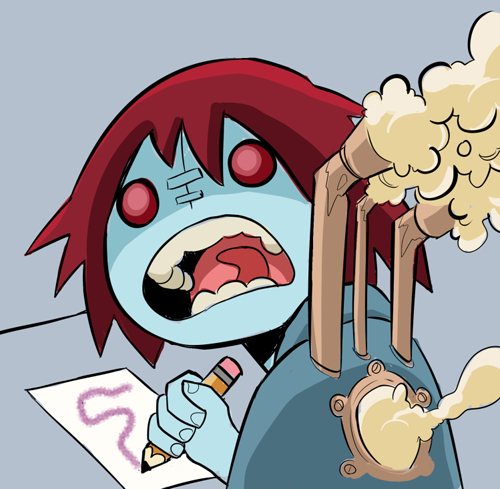 |
Madeleine Rosca
PREVIEWSworld: Tell us a little bit about yourself. What’s it like being Madeleine Rosca
Madeleine Rosca: I’m a graphic novelist living in Tasmania, Australia. I’m the creator of the all-ages manga series Hollow Fields. It’s about a girl who accidentally enrolls in a school for mad scientists, and must survive its dastardly secrets and terrible cafeteria lunches. I used to work as a public librarian, but that’s now a dark chapter of my past.
PREVIEWSworld: What are your favorite manga you’ve worked on in your career?
Madeleine Rosca: Hollow Fields, because I write it as well as producing the art. It’s my baby. I wanted to create a book that I would have liked as a young reader. Hopefully I’ve achieved that.
PREVIEWSworld: What manga are you currently working on?
Madeleine Rosca: I’m about to release the fourth volume in the Hollow Fields series, Hollow Fields and the Perfect Cog! I’ll also be bringing my webcomic, Rise From Ashes back online after a hiatus.
PREVIEWSworld: What is your favorite manga?
Madeleine Rosca: Oh so many. Fullmetal Alchemist probably gets mentioned by everyone, but it’s just that good. Years ago I loved Ranma ½, and I think that’s still up there. When I was a librarian, none of Rumiko Takahashi’s manga stayed on the shelves for long.
PREVIEWSworld: What is your favorite manga?
Madeleine Rosca: The aforementioned Fullmetal Alchemist! It’s a completed series, which is always an added bonus.
PREVIEWSworld: What anime do you think should be made into a manga or vice-versa?
Madeleine Rosca: This is clearly where I say my own manga would make a great anime. I’ll just sit here quietly and wait for the offers to flood in.
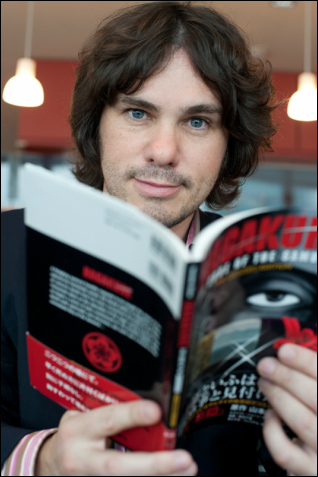 |
Sean Michael Wilson
PREVIEWSworld: Please tell us a bit about Masahiko Matsumoto.
Sean Michael Wilson: Along with Yoshihiro Tatsumi and a few others, Masahiko Matsumoto was in the vanguard of artists looking beyond the style of manga that their mentor Osamu Tezuka had created to push manga into darker and more realistic areas. That manga can now roam in such dark areas commonly accepted, but these guys were the first to venture into those forests. Matsumoto’s first work came out in1953, Preppy Teacher, while a few years later, in the anthology title Kage, “Shadow," showed he began to develop those more mature subjects and further the techniques of manga. He came up with the word 駒画 (koma-ga, panel pictures) to describe this new type, which inspired Tatsumi to come up with the term 劇画 (gekiga, “dramatic pictures” ). The stories in the Cigarette Girl collection are from around the same era (early and mid 70s) as those tales of Tatsumi that have rightly received so much praise recently, but Matsumoto shows a lighter touch and more humor in his approach. Thus they greatly further extend our understanding of the gekiga style.
PREVIEWSworld: How did you come to work with his manga?
Sean Michael Wilson: My colleague Mitsuhiro Asakawa, one of the editors of the Japanese edition of AX, is to be thanked for introducing me to the works of Matsumoto, and it’s no exaggeration to say that all fans of mature manga owe a debt of thanks to Asakawa for his efforts to bring the spotlight back to such neglected manga creators as Matsumoto, Tatsumi and several others. I’m just glad to play my part in helping to bring these English editions out.
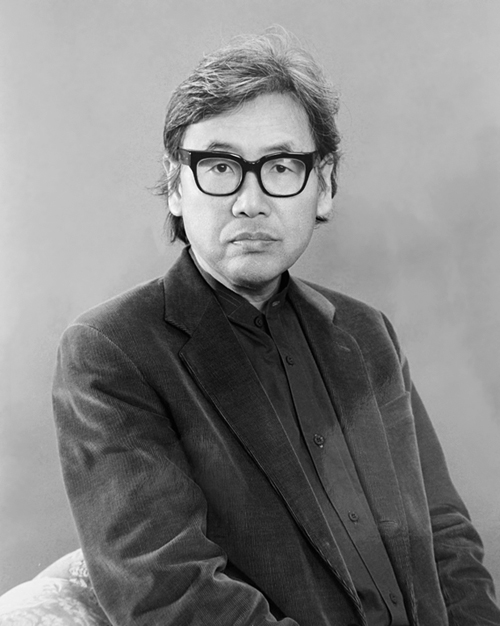 |
| Masahiko Matsumoto |
PREVIEWSworld: What other works (from Matsumoto or other mangaka) would you like to see published in English?
Sean Michael Wilson: Again, making reference to Tatsumi — who I also have had the pleasure of working with — his autobiography, A Drifting Life, showed us a lot about the early manga industry in Japan in the 1950s. So what I hope is that next we can bring out an English edition of Matsumoto’s autobiography 劇画バカたち!(Gekiga Freaks! from 1979), which will further increase our understanding. Then, of course, the other creator that has to be on a list of ‘Please do!’ for future publication is Yoshiharu Tsuge, who mixed the surreal and the mundane on such such stories as Nejishiki (Screw Style ) and “Muno no Hito” (The Man Without Talent). However, at present, he is not allowing English versions of his wonderful work. We can live in hope.
PREVIEWSworld: What manga would you recommend to readers who enjoy Cigarette Girl?
Sean Michael Wilson: What I have mentioned already! Our AX book (also by Top Shelf), Tatsumi and Tsuge. They may also want to check out Shigeru Mizuki's wonderful three part Showa series, that mixes a history of Japan with the personal experiences of Mizuki himself. They might even, if feeling very adventurous, buy one of MY books! I’ve written a unique line of almost a dozen Japanese historical books, from The Book of Five Rings to The 47 Ronin, working with various Japanese artists. All available from Diamond, of course.




